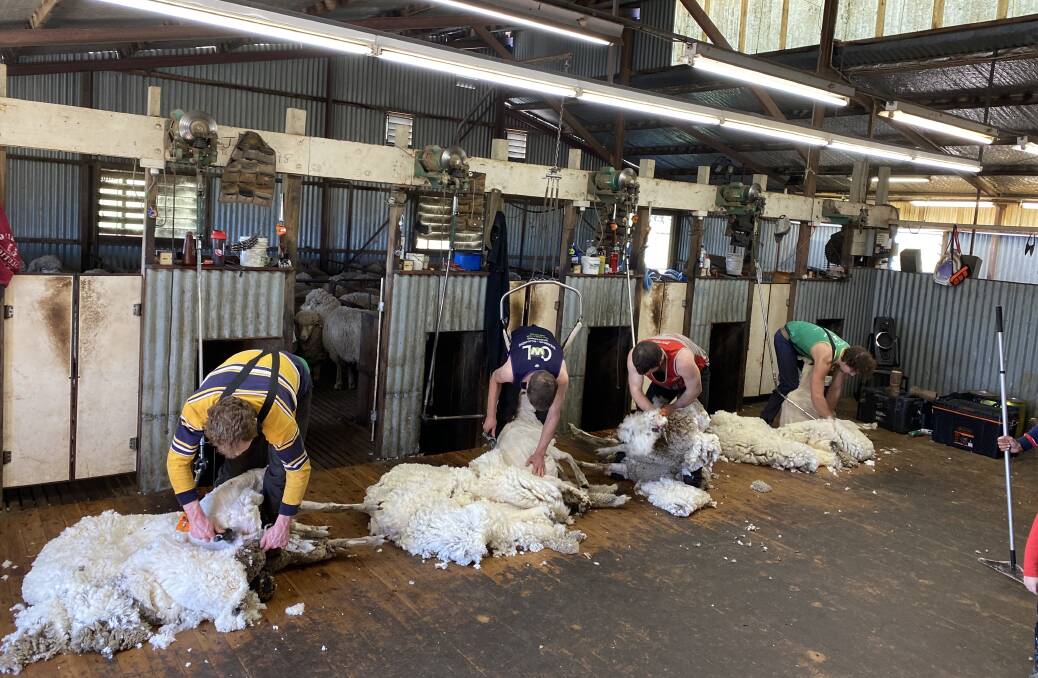
Unanimous feedback from all states in MLA's Sheep Producer Intentions survey says input prices are a real concern for the sheep industry.
Subscribe now for unlimited access to all our agricultural news
across the nation
or signup to continue reading
Inflation continues to increase and was sitting at 7.3 per cent in January 2023, placing pricing pressure on inputs.
The survey identified that 51pc of producers expected an increase in input prices of up to 10pc. Meanwhile, 35pc expected an increase of more than 10pc.
The recently released MLA Sheep Industry Projection report for 2023 said extremely high fertiliser costs - a key input in crops - has reduced the margins of many cropping enterprises and, in some instances, sheep grazing will be more profitable.
Matt Dalgleish, market analyst at EP3 said the addition of shearing and crutching costs sees the total labour spend blow out to 35.5pc of total on-farm costs for a prime lamb or wool operation.
"Data collected by agricultural consultancy firm Agrista, showing average on farm proportional costs for beef, prime lamb and wool producing farms across Australia, highlights that labour costs and fees spent on contract services, such as shearing and crutching for sheep based enterprises, feature as significant cost items in the farm budget," Mr Dalgleish said.
According to Mr Dalgleish, average prime lamb enterprise spends about 17.3pc on wages, 11.9pc on shearing/crutching costs and 5.7pc on other contract services.
Read More
An average wool producing farm spends about 20.4pc on wages, 13.3pc on shearing/crutching costs and 2.2pc on other contract services.
Across all livestock enterprise types - beef, prime lamb and wool producing farms combined - fertiliser is the fourth costliest spend, at around 8.5pc of total on farm costs, on average.
"It's not all bad news on the farm cost horizon though as we enter 2023," Mr Dalgleish said.
"Global gas prices are in retreat and this means that, at least on an overseas basis, fertiliser prices are also declining."
Prime lamb and wool operations, combined, spend 7pc of total costs on fertiliser, which is the fifth costliest spend.
However, as individual operations, the prime lamb enterprise spends about 9.8pc of their total costs on fertiliser, which is the third placed costliest spend behind wages and shearing/crutching costs.
Meanwhile for a wool producing operation, fertiliser costs account for just 4.1pc of total costs and drops to seventh place in terms of the costliest spend.
Ever increasing input costs have been mentioned by many analysts including Andrew Smith, Rural Bank Head of Agribusiness Development.
"High production costs are expected to remain an ongoing challenge for producers with input costs and the cost of labour forecast to remain elevated while visitors on working holiday visas remain well below pre-pandemic levels," Mr Smith said.
"We see farm input costs persisting as a key issue in 2023 across every sector.
"Tight global fertiliser supply combined with high fuel and labour costs will weigh on grower margins, however, a generally weaker Australian dollar in comparison to the first half of 2022 should lift the overall competitiveness of our agricultural exports."
Mercado analysts have reported that the producer price index for sheep, beef, cattle and grain farming in Australia has taken a very steep trajectory over the last 20 years.
Input costs have surged over 150pc since 2002 to represent an average compound price inflation rate of 4.7pc per annum.
The story in the past three years is one of extreme cost increases, at 28pc since 2019.
The Australian agriculture industry as a whole has suffered a 115pc increase in input costs since 2002, suggesting that some players in the sector are less directly exposed than producers.
The cost of producing metal products in Australia, such as fencing, has increased 70pc in the last decade. The industry has seen a 30pc increase in input costs since the end of 2019 alone.
Fertilizer manufacturing costs have skyrocketed by 61pc in the last couple years mostly due to rising international commodity prices with sudden increases not unusual.
Many products utilised within farming are either imported or rely heavily off foreign components.
The cost of imports into Australia have jumped 30pc in the last decade.
However, more encouragingly, is that the index has seen a period of falling prices between 2014 and 2018.
Plastic water delivery pipelines, water troughs, poly tanks and irrigation systems are critical to success, especially in an unpredictable climate.
Production costs have jumped 37pc over 10 years with 30pc of this attributable to the last three years.
Pesticide manufacturing has also been exposed to high global prices, jumping 40pc in three years, but costs did recede at times during 2022.
The good news?
The average cost of producing veterinary pharmaceuticals hasn't gone up much since the Covid pandemic, with only a 10pc increase recorded.

